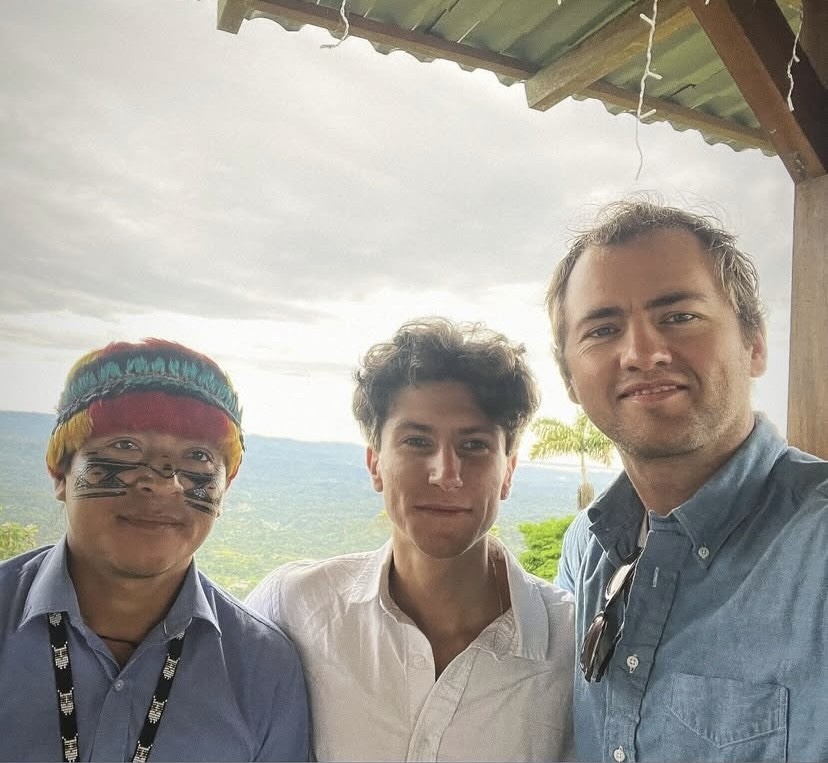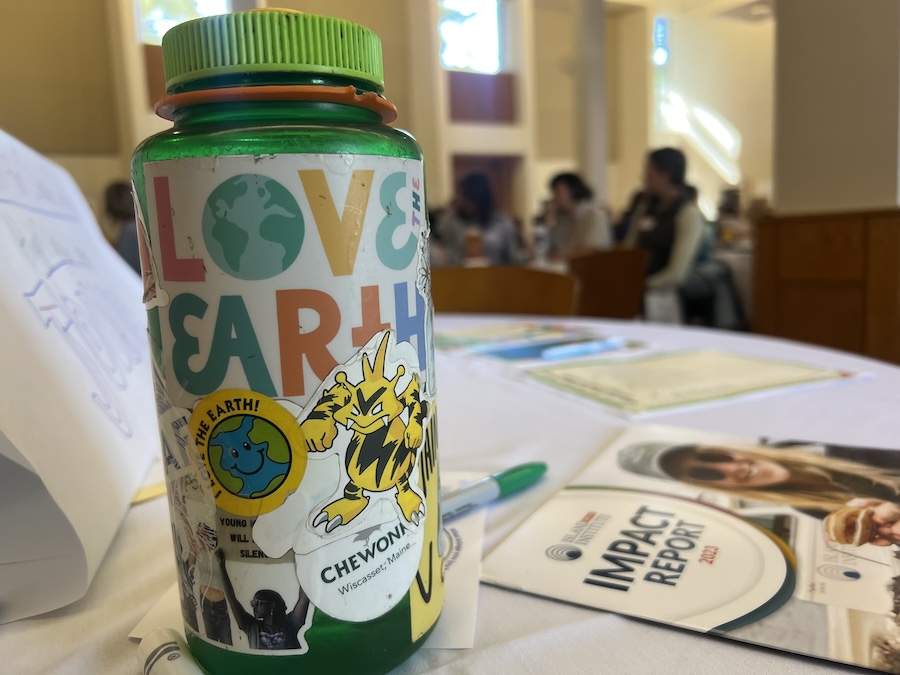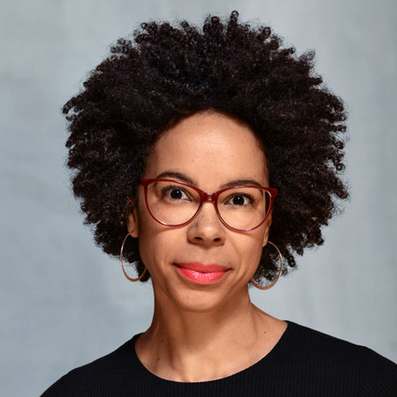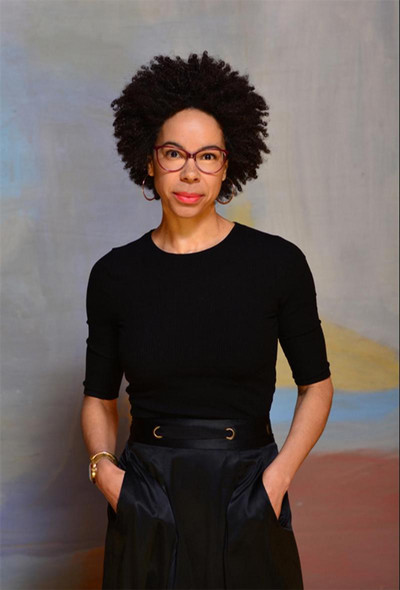Issie Gale ’25 Sows the Seeds for a Pollinator Park
By Rebecca Goldfine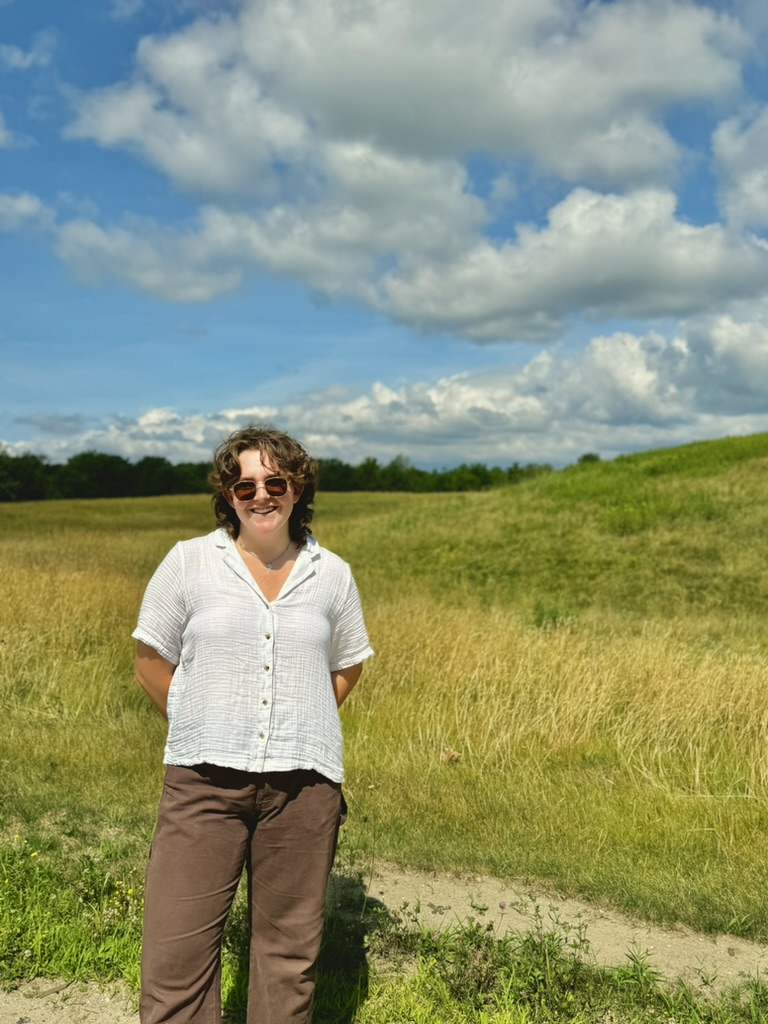
This summer, Gale had a fellowship from the Environmental Studies program to intern for the town of Topsham's planning department. The environmental studies major learned how to read subdivision plans, went to public meetings, studied storm water engineering, and figured out how to locate a crosswalk for a new sidewalk at a housing development.
Gale also toured the site where the town processes trash. “On this random Tuesday, we met with the solid waste manager, Ed Caron, and I knew I really wanted to work with him,” they said. “He inspired me with his energy and commitment to enhancing the transfer station.”
Caron has turned the Topsham site into a role model for waste management, not just because of the amount of money the town earns by selling recyclables, Gale said. The large facility also has acres of fields where birds nest and grasses bend in the wind. It has winding bicycle paths, a small challenge course for mountain bike riders, forested ATV trails, and gleaming aquamarine ponds stocked with brook trout.
Gale is also a history major and urban studies minor. They said they first became curious about urban studies in a Falmouth, Maine, high school class after their teacher started to lecture about zoning laws. “I was fascinated, especially when we were talking about multifamily houses,” they said. “Nerding out over that that was a sign to me that I should look into this more.”
They said that their mix of academic pursuits at Bowdoin is the “perfect Venn diagram of environmental stuff, history, architecture, and social justice.”
Their internship with Topsham has only reinforced to them that town or regional planning is the direction they want to steer their career. “There was a worry in the back of my head that maybe I would hate this,” Gale admitted. “But I haven’t. I’ve loved going on site visits and overseeing development reviews. Working in Topsham has been directional in my thinking about planning.”
Below this bucolic scene, however, are acres of buried trash and toxic sludge from paper mills. Three landfills here were closed in 1994 after the Maine Department of Environmental Protection ordered the end of all in-ground trash repositories. The Topsham landfills were capped in 1996 with compacted clay, sand, loam, nitrogen, and tall grass.
“If you didn’t know the waste was there, you would think it was a bunch of grassy fields,” Gale said. “I felt really inspired by how much there was for the public to enjoy.”
Caron indicated to Gale and the other students on the tour that he was open to ideas for new ways to enhance the space. Gale immediately started thinking. They first pitched beekeeping, but had to discard that plan after learning that PFAS, dangerous chemicals that are in the Topsham landfills, could contaminate the honey, making it unsafe to eat. For the same reason, it was probably not wise to plant a community vegetable garden.
They also considered a solar farm, but that was too big an undertaking to complete in just one summer. “It was beyond our scale and it also didn't fit with the recreational vibe,” Gale said.
Then they “stumbled” upon the idea of a pollinator garden after discovering that both Oakland and Harpswell had planted them at their transfer stations. Pollinator gardens are increasingly popular in backyards and public green spaces, as they're seen as one way to stem the worrisome decline of many pollinator species due to pesticides, pathogens, loss of habitat, and climate change. The gardens also help birds, other beneficial insects, and small mammals.
Gale and Caron toured the Harpswell garden and got many of their questions answered from the town's solid waste manager. One major difference between this site and Topsham's, however, is that the Harpswell garden is just 1.7 acres. Topsham's pollinator garden would be more of a pollinator park, as Gale calls it, since it would encompass about ten acres. The cost of creating the ecological meadow would come to about $11,000, which would cover a flower seed mix that appeals to native pollinators, as well as the tilling and sowing of the field.
After drawing up a proposal, Gale presented it to the Topsham select board. “I know it is asking for a fair amount of money, but the good thing is that most of the costs are up front,” they said. After the flowers have matured, the town would only have to mow walking paths, if it decides to create them.
Besides reading up on flower species and pollinator park maintenance, Gale researched possible grant sources, including nonprofits that support pro-pollinator efforts.
Topsham Planner Josh Franklin said that town officials have received the idea positively, and that he plans to pick up where Gale left off. “We are pushing to turn Issie's idea into a reality,” he said. “I have no reason to believe this wouldn’t happen, especially since Ed Caron is so supportive.”
Franklin added that he couldn't say enough good things about Gale and this summer's two other town interns, Rickey Karunadhara ’26 and Ashley Morash ’26. More broadly, he praised Bowdoin's program that partners students with local government. Grants that support students interested in public service internships are available from the McKeen Center, the Office of Career Exploration and Development, and the Environmental Studies program.
“It's incredible to see how much work these students are doing in Maine,” Franklin said, mentioning a July event he attended at Bowdoin that showcased the work of this summer's environment and community interns. “It makes you realize how invaluable this initiative is, because it places these talented students throughout Maine where they're using their amazing brains to make all these things happen, like this pollinator program.”
The Topsham pollinator park would be made up of the following mix of flowers:
- Virginia Wild Rye
- Little Bluestem
- Big Bluestem
- Red Fescue
- Indian Grass
- Switchgrass
- Partridge Pea
- Showy Tick Trefoil
- Butterfly Milkweed
- Beggar Ticks
- Purple Joe Pye Weed
- Black-eyed Susan
- Heath (or Hairy) Aster
- Early Goldenrod
